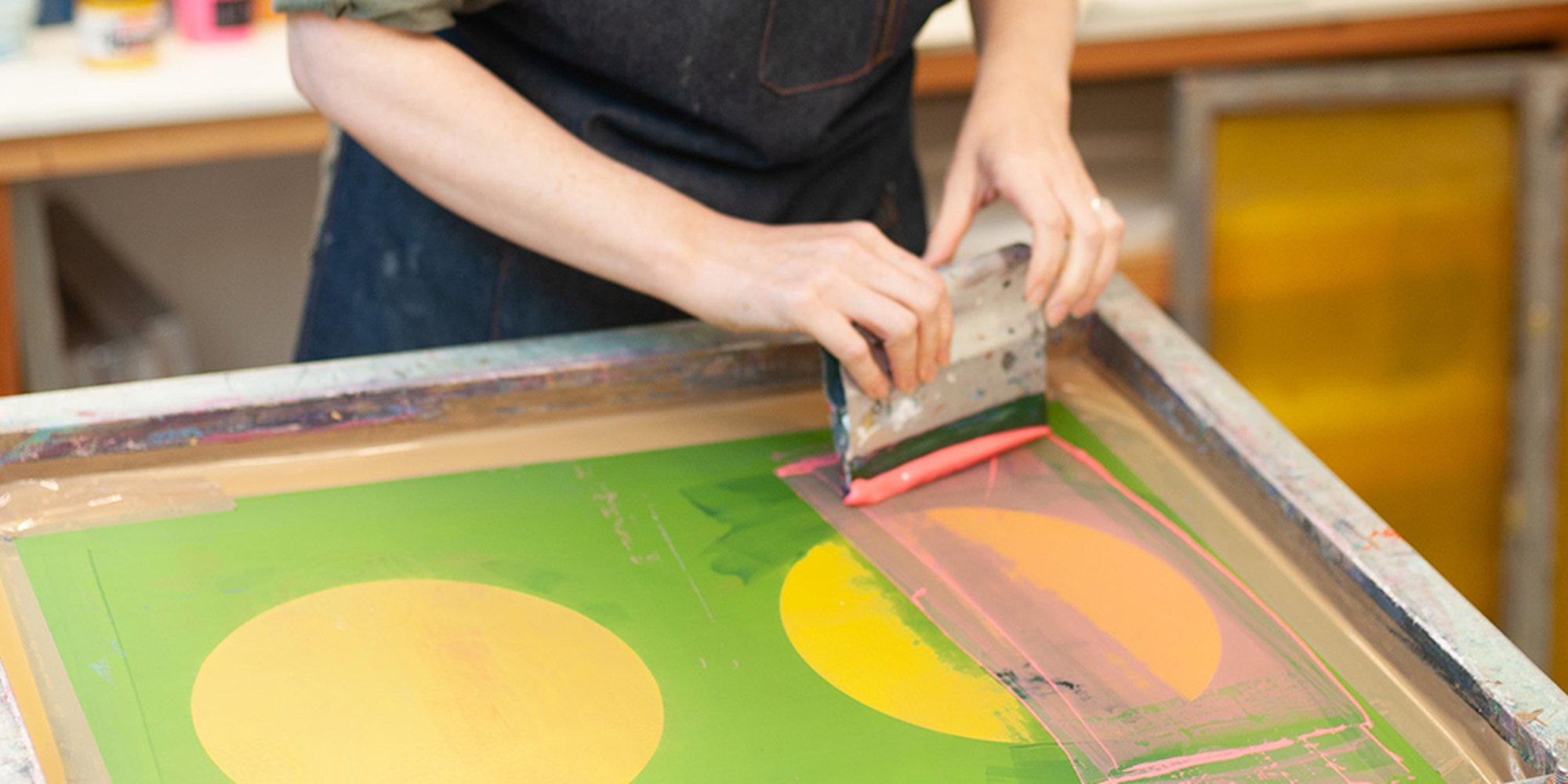The Necessary Overview to Recognizing Screen Printing and Its Versatile Makes use of
Screen printing has an abundant history that dates back to ancient times, progressing into an advanced strategy used across numerous markets today. This guide checks out the details of the screen printing process, detailing its applications in style, marketing, and home design - 10:9 Design reviews. Understanding these fundamentals can open imaginative potential for both imaginative and industrial projects. The following sections will certainly disclose essential pointers and strategies to enhance one's screen printing endeavors
The History of Screen Printing
Although screen printing has origins that trace back centuries, its evolution reflects the artistic and technological improvements of various societies. Coming from ancient China, the technique was at first made use of for enhancing textiles and later spread to Japan, where it became integral to Ukiyo-e woodblock printing. The approach changed to Europe in the 18th century, where it obtained appeal amongst craftsmens and industrial printers. The development of photo solution in the 20th century revolutionized screen printing, enabling for even more complex layouts and better performance. Musicians like Andy Warhol additionally pushed its appeal, utilizing the tool to develop famous jobs that blended commercialism and art. By the late 20th century, screen printing had actually established itself as a functional strategy, utilized in fashion, advertising and marketing, and great art. Today, it continues to progress, incorporating electronic modern technology and expanding its applications throughout different sectors.
The Screen Printing Process Explained
Screen printing transforms creative visions right into substantial styles via a collection of precise steps. At first, an image is developed and afterwards moved onto a screen, usually constructed from fine mesh textile stretched over a structure. A light-sensitive solution is applied to the screen, which is exposed to light, hardening in locations not covered by the photo. After cleaning out the unhardened solution, a stencil is formed.
Next, the screen is placed over the substrate, whether it be textile, paper, or another material. Ink is after that pushed with the open areas of the pattern utilizing a squeegee, transferring the style onto the substratum listed below. This procedure can be duplicated for numerous colors, calling for different displays for each and every shade. Ultimately, the published thing is cured utilizing warmth to guarantee the ink sticks correctly, leading to a long lasting, vibrant style prepared for use.
Sorts Of Screen Printing Techniques

Furthermore, specialized methods, such as discharge screen printing, remove color from the material to produce softer prints, while aluminum foil screen printing uses metal aluminum foil to achieve a glossy finish (10:9 Design Company). Each strategy offers unique characteristics, satisfying various imaginative needs and manufacturing ranges, i thought about this inevitably broadening the opportunities within the screen printing domain
Applications of Screen Printing in Various Industries

Furthermore, the signs and advertising and marketing industries make use of screen printing for creating distinctive displays and banners. This technique permits vibrant shades and complex designs that catch focus. In electronics, screen printing is employed for applying conductive inks to motherboard, necessary for part connections. Additionally, the home decoration sector accepts screen printing to produce unique layouts on fabrics and wall surface art. In general, screen printing works as an essential device throughout varied fields, improving products with personalized and visually enticing graphics.
Tips for Effective Screen Printing Projects
While taking on a screen printing task, mindful focus to information can considerably improve the last end result. Picking top notch products is necessary; this consists of the screen, inks, and substrates. Using appropriate mesh counts can affect ink deposition and information resolution. Prep work is similarly essential; detailed cleaning of screens and correct exposure times assure crisp prints.
Next off, precise enrollment is critical for multi-color prints. Making use of placement tools can aid achieve precise layering. In addition, screening prints on scrap materials prior to manufacturing assists recognize prospective issues without wasting sources.

Regularly Asked Inquiries
What Products Are Ideal for Screen Printing on Material?
Cotton and polyester blends are excellent for screen printing on material because of their toughness and ink absorption. In addition, specialized my company materials like silk or canvas can create distinct structures and surfaces, improving the total design top quality.
Just how Do I Tidy and Maintain Screen Printing Tools?
To preserve and clean screen printing equipment, one need to regularly clean displays with suitable solvents, examine squeegees for wear, oil relocating parts, and store all things in a dry, dust-free environment to lengthen their life-span.
What Are the Environmental Effects of Screen Printing?
Screen printing can have considerable environmental effects, including chemical waste from solvents and inks, water use throughout cleaning procedures, and power consumption. Eco-friendly products and sustainable practices are crucial for lessening these negative results.
Can Screen Printing Be Done in your home Effectively?
Screen printing can be effectively done at home with the appropriate materials and strategies. Enthusiasts can produce quality prints, though success depends upon their skill level, equipment, and understanding of the process entailed.
What Are the Prices Related To Beginning a Screen Printing Organization?

Beginning a screen printing company includes prices for tools, materials, and work area. First expenditures generally range from a few hundred to numerous thousand bucks, depending on the scale, quality of machinery, and preferred manufacturing ability.
Screen printing has an abundant history that dates back to ancient times, developing right into an innovative strategy made use of throughout numerous industries today. An additional strategy, rotating screen printing, uses round displays, facilitating continuous printing on fabric rolls, thus improving efficiency for large manufacturings. In addition, specialty techniques, such as discharge screen printing, remove dye from the textile to produce softer prints, while foil screen printing uses metal foil to accomplish a glossy surface. In the fashion market, screen printing is commonly utilized to create dynamic designs on garments, making it possible for brand names to display their unique designs. Cotton and polyester blends are ideal for screen printing on textile due to their resilience and ink absorption.